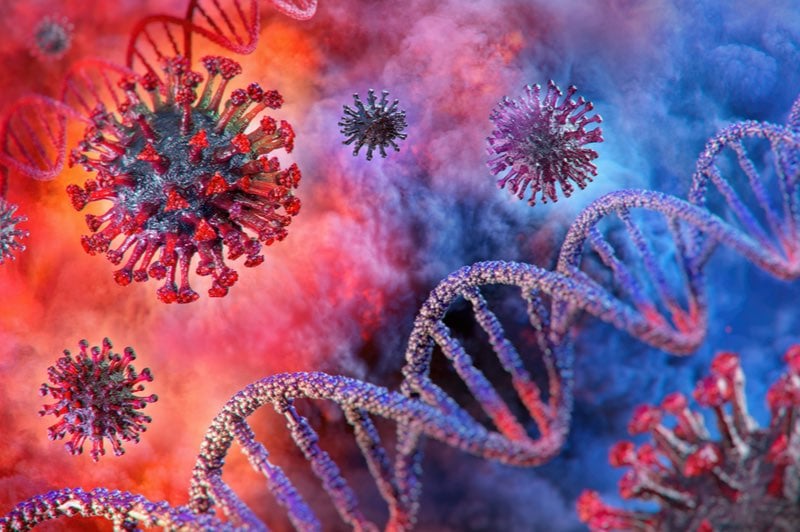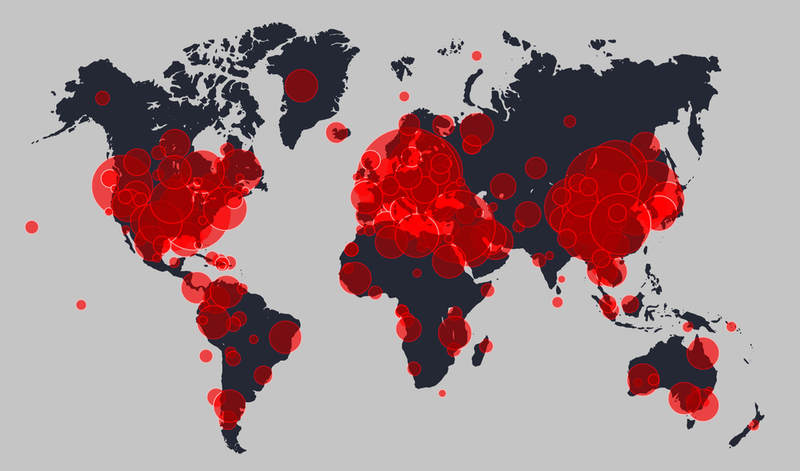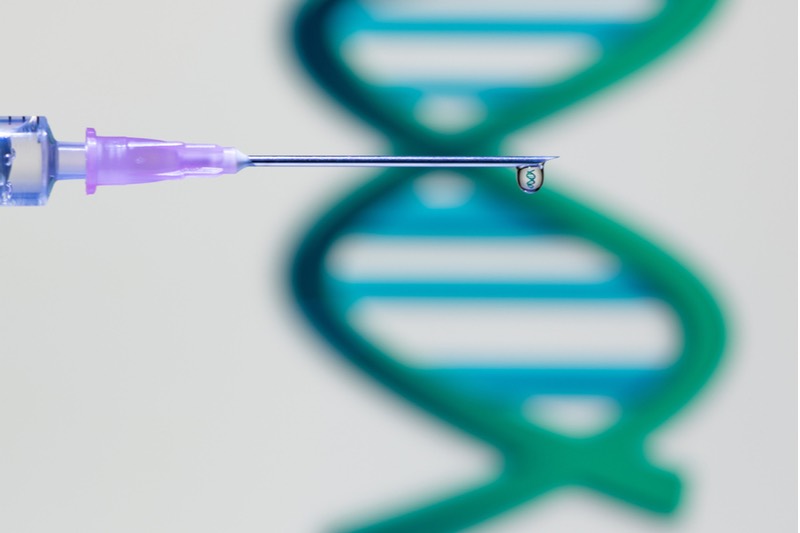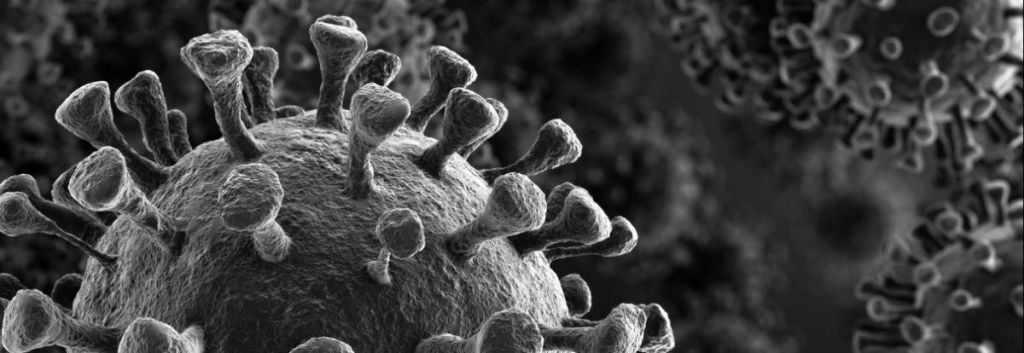The unprecedented scale of the current Covid-19 pandemic has led to a vaccine ‘race’ the like of which has never been seen before. This may change the face of vaccine development forever.
Since the English physician Edward Jenner invented the first smallpox vaccine in 1796, vaccines have resulted in dramatic reductions in deaths from previously fatal illnesses. However, vaccine developers have not always had an easy ride.
“Significant investment, in both time and money, is needed to advance a vaccine candidate to market,” Thomas Lingelbach, CEO of French vaccine developer Valneva, told me. “In addition to the extensive clinical trial recruitment and separate trials for children and infants, vaccine development takes between 10 to 15 years depending on the disease area and its complexity, and it is not until the final three years of development that efficacy is indicated.”
Despite their obvious humanitarian value, historically it has been hard to persuade investors to fund vaccine development. Vaccines have long been perceived as having low returns on investment, particularly when the illness in question is not rife in the population. However, recent outbreaks of diseases such as Ebola, SARS and now Covid-19 have been a wake-up call to both investors and governments about the importance of pandemic preparedness.
As of May 15th, there are 110 companies, groups of researchers, and collaborative academia-industry partnerships developing vaccines to combat SARS-CoV-2, the strain of the virus causing Covid-19, with more joining the fight every week. Eight candidates are already being tested in humans, according to the World Health Organization (WHO), including both DNA and RNA vaccines – innovative technologies that have yet to be approved for human use.
Although no one can say for sure at this point, estimates have been made that we could have a Covid-19 vaccine within 12 months, which would be a record time if true. There are some concerns about safety with such speedy development, but it seems clear that Covid-19 has reinvigorated the industry and brought the importance of infectious disease protection back to the forefront of people’s minds. Whether one of the old and tested methods of vaccine development or a newer, more experimental method will succeed remains to be seen.
| Type of vaccine | Developers | Country | Current stage of clinical evaluation |
| Non-Replicating Viral Vector | CanSino Biological and Beijing Institute of Biotechnology | China | Phase I/II |
| RNA | Moderna and NIAID | USA | Phase I (Phase II pending) |
| Inactivated | Wuhan Institute of Biological Products and Sinopharm | China | Phase I/II |
| Inactivated | Beijing Institute of Biological Products and Sinopharm | China | Phase I/II |
| Inactivated | Sinovac | China | Phase I/II |
| Non-Replicating Viral Vector | University of Oxford and AstraZeneca | UK | Phase I/II |
| RNA | BioNTech, Fosun Pharma and Pfizer | Germany, China and USA | Phase I/II |
| DNA | Inovio Pharmaceuticals | USA | Phase I |
The eight Covid-19 vaccines in clinical development. Table caption/credit: Adapted from WHO website – DRAFT landscape of COVID-19 candidate vaccines – accessed 15 May 2020
Whole pathogen vaccines – old, but effective
Since Jenner’s smallpox vaccine was introduced, many other similar vaccines have been developed. To begin with, these involved injecting people with inactivated (killed) samples of the disease-causing microbe. For example, inactive cholera and rabies vaccinations were introduced in the 1880s. These vaccines are effective, but don’t usually give people long-lasting immunity.
Although the technology has been around for a long time, inactivated vaccines are still in use today, such as the seasonal flu vaccine. Vaccines company Valneva, which has already used this approach to develop a vaccine for Japanese encephalitis, is one of the biotechs using this more traditional approach to target Covid-19.
“We believe that a more conventional approach has a high probability of success,” explained Lingelbach. “The proven approach that we are taking… has the potential to yield protection for the general population as well as high-risk groups, including the elderly, immuno-compromised, and individuals suffering from other diseases.”
Scientific advances in the 1950s meant that creating weakened or ‘attenuated’ forms of the pathogen in the laboratory was much easier. This meant vaccine developers could create live, attenuated, whole organism vaccines such as the measles, mumps, and rubella vaccine.
This technique has been used successfully to target a number of viruses, but is harder to apply to diseases caused by bacteria or parasites. The immunity induced by attenuated vaccines can be lifelong, but the vaccines themselves are fragile and often need to be transported in cold storage. This means that it can be hard to provide them to impoverished communities lacking the appropriate equipment for large scale vaccination.
Toxoid and subunit vaccines – ushering in a second generation
Not all vaccines include the whole disease-causing pathogen. The symptoms of certain infections are caused by toxins produced by the pathogen rather than the organism itself. These include diphtheria and tetanus, both of which are caused by toxins released by the bacteria that cause the infections.
In the 1920s, scientists realized it was possible to create a ‘toxoid’ — a harmless version of the diphtheria and tetanus toxins that would allow someone vaccinated with it to become immune to the symptom-causing toxin — but not experience its toxic effects.
A problem with the earlier whole-organism vaccines was that they often triggered side effects in people and could even, in the case of live vaccines, put some people at risk of contracting a mild version of the infection. Vaccines composed of only parts or ‘subunits’ of the pathogen or specific antigens known to trigger immunity were introduced to try and combat this problem.
A good example of this is the vaccine for whooping cough or pertussis. The original vaccine, which was introduced in the 1940s, was a whole-organism, inactivated vaccine. It was effective at triggering immunity, but often caused side effects such as fever and swelling at the injection site, which put parents off having their children vaccinated.
In 1986, US researchers identified a fragment of the bacterial DNA that encoded the pertussis toxin that caused the disease. A vaccine using this fragment was developed, which was linked to far fewer side effects than the original, and in 1996 a combined tetanus-diptheria-pertussis vaccine came on the market.

ExpreS²ion Biotechnologies is a Danish company that specializes in the creation of complex proteins. It has worked on several malaria vaccines in the past and is now producing SARS-CoV-2 antigens as part of a collaboration to produce a subunit vaccine for Covid-19 with its spin-out AdaptVac and the University of Copenhagen.
While the subunit vaccine has not yet started human clinical trials, like many of the candidates, it is being developed much faster than normal.
“The current Covid-19 pandemic is fundamentally unprecedented. The fact that we… can go from vaccine design to potentially having a late-development-stage collaboration partner in just three months is unheard of,” ExpreS²ion CEO Bent Frandsen, told me. He says that an advantage of his company’s manufacturing system compared to some others is that it involves no viral components, making it easier to handle and scale up.
Other variants in this second generation of vaccines include those targeting the polysaccharide sugars on the outside of bacteria. These include ‘conjugate’ vaccines that are made up of at least two components such as a polysaccharide and an antigen, and recombinant vaccines that have been genetically modified to produce the correct antigen, such as the hepatitis B vaccine.
Two of the candidate Covid-19 vaccines that are currently being tested in humans are recombinant adenovirus vaccines, one being developed by the CanSino Biological and the Beijing Institute of Biotechnology in China and the other by the University of Oxford in the UK and the British big pharma AstraZeneca.
While some recombinant vaccines are on the market, adenovirus-based vaccines are new. Often used as vectors for gene therapy, a problem with adenoviruses is that they are common in the environment so many people have pre-existing immunity to human adenoviruses, which can reduce their efficacy.
DNA and RNA vaccines – the start of a new era?
Over the last two decades, since the completion of the human genome project, there has been a revolution in next-generation sequencing and genomics. More recently, there has been a dramatic increase in the number of cancer therapies being developed to target the immune system. These two factors combined have led to the development of innovative vaccines based on DNA and RNA.
Notably, before the Covid-19 pandemic began, most DNA and RNA vaccines in development were designed to target cancer, but things have changed dramatically in the last couple of months.
One big advantage of both DNA- and RNA-based vaccines is that they can be developed much more quickly than conventional vaccines. DNA vaccines are more stable than RNA, if less easy to deliver, and they do not need to be kept cool like some other vaccines.
No DNA or RNA vaccines are yet on the market to protect humans from infections, but there is an approved DNA vaccine on the market to protect horses against West Nile virus.

US biotech Inovio Pharmaceuticals, which specializes in DNA vaccines for cancer and infectious diseases, is testing a vaccine candidate to protect against Covid-19. Indeed, the company recently announced it has completed phase I enrolment and will release initial results from the trial in June.
The company’s process involves inserting a small piece of the virus DNA into a circular piece of bacterial DNA called a plasmid, which becomes the basis of the DNA vaccine. Once injected, the vaccine causes cells in the patient to produce a coronavirus protein called ‘spike,’ training the immune system to detect this protein in real infections.
Since before the arrival of Covid-19, Inovio has been developing another DNA vaccine to protect against a similar coronavirus to SARS-CoV-2 that is responsible for Middle East Respiratory Syndrome (MERS). Kate Broderick, Senior Vice President of R&D at Inovio, thinks this prior experience with MERS will stand the firm in good stead to develop a successful vaccine.
“We have a huge amount of clinical experience in the infectious disease space,” she said. “Because we have the leading MERS vaccine candidate, we have an enormous amount of positive data both in animals and in humans with a coronavirus vaccine.”
Broderick added that the MERS vaccine provided 100% protection to monkeys in a preclinical study and recently showed initial signs of generating immunity to MERS in the blood of human study participants in the US and Korea.
The Swedish OPENCORONA consortium is also developing a DNA vaccine for Covid-19 but is taking a slightly different approach according to Matti Sällberg, a professor at the Karolinska Institute in Stockholm – one of the partners in the group.
“We’re doing the basic science first, and looking at developing a vaccine that’s more future-proof than the ones currently in clinical trials, which are all based on the spike protein,” he told me.
“We’re basically making a synthetic whole virus vaccine… We’re starting out with the DNA vaccine, but we’re going to look at different delivery techniques to see what’s best. The reason why we’re starting out with the DNA vaccine is that it’s very rapid.”
Two of the Covid-19 vaccine trials now running in human volunteers are using messenger RNA (mRNA) vaccines – one run by US-based Moderna and one by German BioNTech. CureVac, another German biotech, is also developing an mRNA vaccine for Covid-19 and plans to start human trials in June.
Vaccines made with mRNA tell human cells to make a specific protein, in this case, a protein carried by the SARS-CoV-2 coronavirus. This leads the immune system to produce protective antibodies that can then recognize and destroy the Covid-19 virus.

Right now, the most advanced mRNA vaccine player in Covid-19 is Moderna, which announced today that its Covid-19 vaccine has shown early potential for activating the immune system of volunteers in a small interim study.
BioNTech started clinical trials last month in Germany and the US. “We are simultaneously testing four candidates in trials on two continents to identify the best mRNA vaccine to prevent Covid-19 infections,” explained Sean Marett, Chief Business and Chief Commercial Officer at BioNTech. “We are optimistic that advancing multiple vaccine candidates into human trials will allow us to identify the safest, most effective vaccination options.”
Although CureVac has not yet entered clinical trials, it has previously tested its mRNA technology in a candidate rabies vaccine.
“We have good safety and tolerability data from our rabies vaccine candidate so far,” acting CureVac CEO, Franz Werner Haas, told me. “This helps us certainly for other indications and pathogens as well, and this is why we think we can be so fast with Covid-19.”
Covid-19’s impact on the future of vaccine development
Vaccine research has surged to become a topic of debate worldwide. It is also attracting enormous political attention, with recent examples including a US announcement of a project to develop a Covid-19 vaccine at “warp speed,” UK government pledges to back vaccine manufacturing, and the EU’s role in a €7.4B global fund to accelerate the progress of vaccines and other technology to fight Covid-19.
It’s hard to say exactly what the future holds, but even if the current intense focus on the Covid-19 vaccine race begins to die down in a few months, it’s hard to believe that something on the scale of the Covid-19 pandemic will not have a lasting impact on the industry.
“I think that the development that’s been done over the past 20 years in genetic vaccines suddenly went into warp speed due to this pandemic,” said Sällberg. “Whether that’s good or bad, I don’t know, but I think it has highlighted the need for new and additional vaccine technologies and has highlighted what the new technologies have the potential to do.”
If even one of the mRNA vaccines is able to protect people against Covid-19, that would have massive implications for the field. Should their Covid-19 efforts prove fruitful, Moderna, CureVac, and BioNTech are all looking to develop a flu vaccine. The current flu vaccine takes around nine months to make. An mRNA vaccine for flu could be produced in two to three months for less money.
Success with DNA or RNA vaccine technology would also be beneficial for cancer patients, as all of these platforms can also be applied to creating therapeutic cancer vaccines.
“While vaccine development is a time- and resource-consuming task, the overall social and economic impact of effective vaccines greatly outweighs the costs,” said Lingelbach. “Spreading awareness of the value of preventative vaccines to the general public at risk and in need of these life-changing treatments is an important step and one that I believe has been made more apparent to the general population due to Covid-19.”
One hope for vaccine developers, both in industry and academia, is that the pandemic will attract more funding into vaccine development. “There may actually be a positive outcome in the short run of renewed investor interests in vaccine companies,” said Frandsen.
“Certainly, looking at the public listed vaccine companies, the market values have increased manyfold in 2020. I hope that attitude will also support companies like ExpreS²ion and AdaptVac in the years ahead.”
Images from E. Resko and Shutterstock





